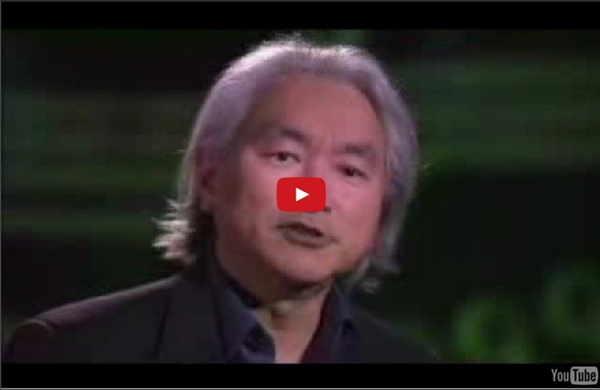



Toward a Type 1 civilization Our civilization is fast approaching a tipping point. Humans will need to make the transition from nonrenewable fossil fuels as the primary source of our energy to renewable energy sources that will allow us to flourish into the future. Failure to make that transformation will doom us to the endless political machinations and economic conflicts that have plagued civilization for the last half-millennium. We need new technologies to be sure, but without evolved political and economic systems, we cannot become what we must. And what is that? A Type 1 civilization. In a 1964 article on searching for extraterrestrial civilizations, the Soviet astronomer Nikolai Kardashev suggested using radio telescopes to detect energy signals from other solar systems in which there might be civilizations of three levels of advancement: Type 1 can harness all of the energy of its home planet; Type 2 can harvest all of the power of its sun; and Type 3 can master the energy from its entire galaxy.
Sommes nous seuls dans l'univers ? Les Grecs, déjà dont Pythagore, pensaient que sur la Lune résidaient des Luniens. Au début du siècle dernier, les hommes pensaient que "Vénus, Mars et Jupiter" étaient habitées. Avec les différentes sondes lancées pour observer de plus près les planètes, la preuve a été faite qu'il n'y avait pas de vie sur celle ci. Cela ne veut pas dire qu'il n'y ait pas de vie ailleurs. Pour le savoir les scientifiques ont d'abord cherché par quel procédé la vie est apparue sur Terre. L'univers est immense. Fluid Simulator Check out my blog! E-mail: kotsoft@gmail.com Fluid Instructions: You can drag the fluid around with your mouse and adjust the sliders at the top to change the properties of the fluid in real-time. Check out my newest app: Grantophone! More cool demos! Please enable JavaScript to view the <a href=" About This is my implementation of the Material Point Method. For interpolation, I use the quadratic B-spline presented here: Analysis and Reduction of Quadrature Errors in the Material Point Method. Instead of integrating the density over time (which is what most of the MPM papers do), I do a density summation every frame. Material Parameters Some of these parameters are hard to explain in one or two sentences (and a couple I made up) so I'll also link you to their corresponding Wikipedia pages. Density - Target density for the particles. Stiffness - How compressible the fluid is. Bulk viscosity - Kind of like damping. Gravity - How much the particles will accelerate downwards.
An Atlas of The Universe Paradoxe de Fermi Un article de Wikipédia, l'encyclopédie libre. Vous lisez un « article de qualité ». Pour les articles homonymes, voir Fermi. Le paradoxe de Fermi est le nom donné à une série de questions que s'est posée le physicien italien Enrico Fermi en 1950, alors qu'il débattait avec des amis de la possibilité d'une vie et d'une visite extraterrestre. Fermi, détenteur du prix Nobel en 1938, et alors qu'il est impliqué dans le projet Manhattan à Los Alamos aux États-Unis, déjeune avec plusieurs de ses amis et collègues (Emil Konopinski, Edward Teller et Herbert York). « S’il y avait des civilisations extraterrestres, leurs représentants devraient être déjà chez nous. Plusieurs hypothèses ont été formulées pour expliquer ce paradoxe. Pour certains auteurs, le paradoxe n'en est pas un ; pour d'autres, il s'agit d'un dilemme ou d'un problème de logique. La question posée par Fermi a toutefois été soulevée avant lui par Constantin Tsiolkovski. §Histoire d'une interrogation[modifier | modifier le code]
Fuck Yeah Fluid Dynamics Reader isotropicposts writes: Hi, I’m taking a fluids class and I’m not sure I understand the whole lagrangian-eulerian measurements of velocity and acceleration. Could you explain this? This is a really great question because the Eulerian versus Lagrangian distinction is not obvious when you first learn about it. If you think about a fluid flowing, there are two sensible reference frames from which we might observe. The first is the reference frame in which we are still and the fluid rushes by. The other way to observe fluid motion is to follow a particular bit of fluid around and see how it evolves. In the end, both reference frames contain the same physics (Einstein would not have it any other way), but sometimes one is more useful than the other in a given situation.
Chronology of the universe Illustration of evolution of the universe from the Big Bang (left). In this diagram, the universe is represented in two dimensions and the third (horizontal) dimension is time, increasing to the right. Summary[edit] The very earliest universe was so hot, or energetic, that initially no particles existed or could exist (except perhaps in the most fleeting sense), and the forces we see around us today were believed to be merged into one unified force. In the second phase, this quark–gluon plasma universe then cooled further, the current fundamental forces we know take their present forms through further symmetry breaking – notably the breaking of electroweak symmetry – and the full range of complex and composite particles we see around us today became possible, leading to a gravitationally dominated universe, the first neutral atoms (~ 80% hydrogen), and the cosmic microwave background radiation we can detect today. Very early universe[edit] Planck epoch[edit] Grand unification epoch[edit]
Société Française d'Exobiologie - Site Officiel